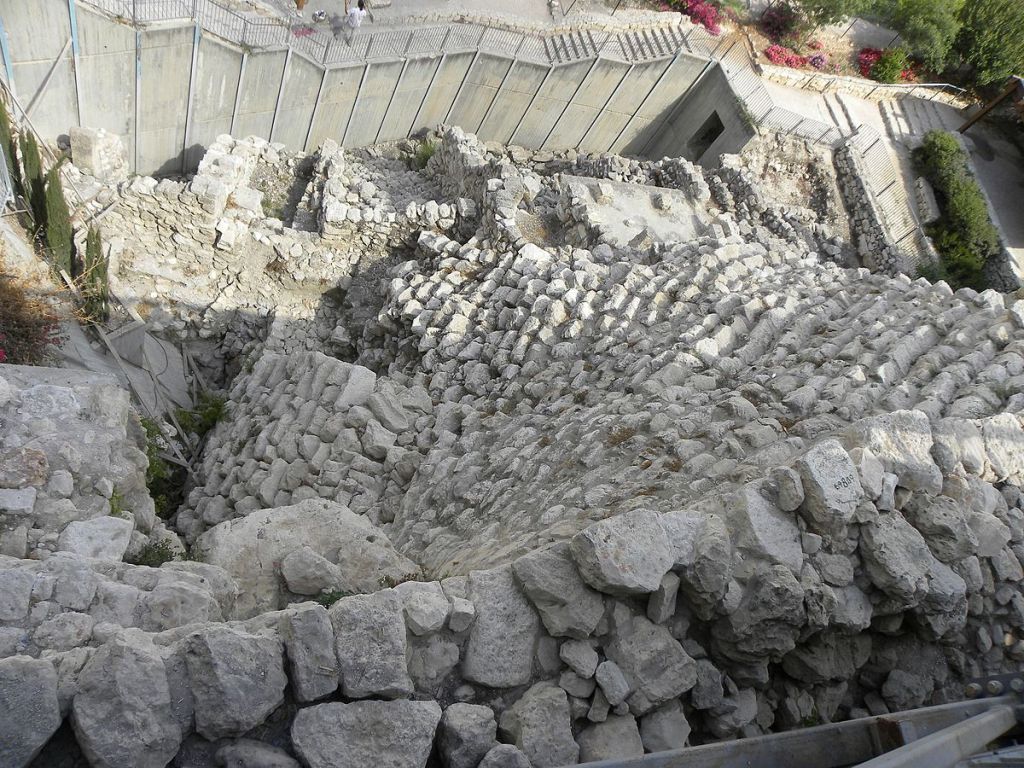By Elizabeth Prata
“I’ll meet you at the place near the thing where we went that time.”
That is one of my all-time favorite movie lines. It comes from the 1987 Rom-Com movie “Broadcast News”, starring Holly Hunter and Albert Brooks. The line was spoken by Albert Brooks as character Aaron Altman, to Holly Hunter’s character Jane Craig. The two were colleagues at a broadcast news station, she was the producer and he was the reporter. They were close friends, who not only worked together but went out platonically (though Aaron wanted more. That was the ‘Rom’).
Their friendship was so close, that all he had to say was the vague statement above and Jane knew exactly what he was talking about. No explicit details needed.
There are some lines in the Bible like that. When Paul says things like ‘You know what I told you before’ or, ‘As I said in my last letter’ but the last letter wasn’t included in the Bible and we don’t know what he said. Or the Tower of Siloam collapse that Jesus mentioned, we have to get from context what happened. Or what did Jesus write in the dirt that stopped the Pharisees from stoning the woman caught in adultery?
Anyway, all that is written is sufficient for our edification, (2 Timothy 3:16-17) we do not need more and we shouldn’t let our curiosity get the better of us and go beyond what is written. (1 Corinthians 4:6).
I’m reading through Samuel, Kings, and Chronicles. Several times something called the Millo is mentioned. David talks about it, sort of like in the opening line, “I’ll meet you at the Millo”. But in this day and age, we don’t really know what that is and we can’t even pinpoint exactly where it was. I got curious about the Millo. Was it a building? A hilltop? It was obviously well known to the Bible writers. Us, not so much.
The Lexham Bible Dictionary’s entry on the Millo begins this way-“A late Canaanite or early Israelite structure in Jerusalem that was used and maintained during the time of Israel’s monarchy.“
It’s never just ‘Millo.’ It is always mentioned with the definite article, the, as in “the Millo”. We further learn,
The Hebrew term “millo” comes from the verb מלא (ml’), which means “to be full” or “to fill,” suggesting that the Millo was an earthwork or terrace of some sort. However, the nature of the Millo is unclear, and its exact location is unknown. Archaeologists theorize that the Millo was a large earthen fill held together by a stepped retaining wall, and situated along the southeastern hill of Jerusalem. The term “Millo” appears nine times in the Hebrew Bible; six of these references clearly indicate the Millo in Jerusalem (2 Sam 5:9; 1 Kgs 9:15, 24; 11:27; 1 Chr 11:8; 2 Chr 32:5). Source-The Lexham Bible Dictionary. Lexham Press.
This is a stepped stone structure:


Sometimes The Millo is used as a landmark, as in this verse: “So David lived in the stronghold, and called it the city of David. And David built all around from the Millo and inward.” (2 Samuel 5:9).
Did you ever ask directions from a local, and they said something like, “Well, you go down the road a piece and then turn left where the old school used to be”. LOL. Locals know where the old school used to be. Newcomers don’t.
Continuing in Lexham Bible Dictionary for information about this intriguing structure,
Millo in the Bible
As an architectural feature of Jerusalem, the Millo is mentioned in the Bible in the contexts of three significant construction projects that took place in Jerusalem:
- After David captured Canaanite Jerusalem (called Jebus in the biblical text), he began a building program in the Canaanite city and “built all around from the Millo and inward” (2 Sam 5:9 author’s translation; see also 1 Chr 11:8).
- The Millo is also mentioned in the context of Solomon’s building program in Jerusalem. This was when he constructed the temple of Yahweh and his own palace, and supplemented the wall of the city with a northern section to accommodate the Temple Mount (1 Kgs 9:15, 24; 11:27).
- As part of his building program in Jerusalem in the eighth century BC, Hezekiah rerouted the Gihon spring, repaired and supplemented Jerusalem’s walls, and “strengthened the Millo in the city of David” (2 Chr 32:5 NRSV) in preparation for an attack by the Assyrian army under Sennacherib (2 Chr 32:2–5; Isa 22:9–11).
Kelley, J. L. (2016). Millo. In J. D. Barry, D. Bomar, D. R. Brown, R. Klippenstein, D. Mangum, C. Sinclair Wolcott, L. Wentz, E. Ritzema, & W. Widder (Eds.), The Lexham Bible Dictionary. Lexham Press.
The Millo seems to have been an impressive structure. It seems to have been widely known. I wonder if anyone back in the day said “Let’s meet at the place near the Millo where we went that time.”
